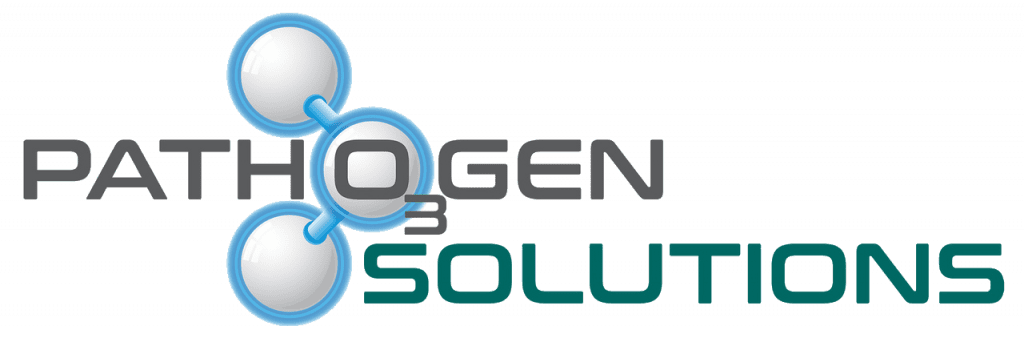The Economic and Societal Impacts of Healthcare-Associated Infections
Hospital
The healthcare sector, often hailed as a beacon of progress in modern society, stands at the forefront of scientific and technological advancements. Companies like PathO₃Gen play a pivotal role in this landscape, introducing innovations that address the challenges faced by healthcare professionals and patients alike. With each passing day, the sector adapts and grows, striving to cater to the multifaceted and ever-changing needs of its global patient base. From pioneering surgical techniques to groundbreaking treatments, the successes are numerous and laudable. Yet, even in this era of medical marvels, a shadowy adversary persists: infections.
These infections are not mere statistics or isolated incidents confined to medical reports. They are real, tangible events that touch lives, often leaving lasting scars. Their impact is not limited to the physical health of the affected individuals. The reverberations of healthcare-associated infections extend far and wide, influencing our communities, shaking the very foundations of our economies, and challenging the trust we place in our societal institutions.
Imagine the bustling corridors of a city hospital, where every second counts and the relentless pace seldom wanes. Now, consider the silent threat that infections pose here, potentially turning every touchpoint into a vector of disease transmission. In this context, the contributions of companies like PathO₃Gen become even more crucial. Their solutions aim to mitigate such threats, ensuring safer healthcare environments. Contrast this with the serene setting of a family home, where the aftermath of such an infection can disrupt harmony, bringing with it not just health concerns but also economic burdens and emotional turmoil.
How Infectious Diseases Affect the Economy
When an individual is unfortunate enough to contract an infectious disease within the confines of a healthcare facility, the financial repercussions are immediate and multifaceted. The costs associated with treating these infections can be staggering, and they manifest in various ways:
- Medications: The treatment of healthcare-associated infections often necessitates a regimen of potent medications. The expenses for antibiotics, antivirals, and other specialized drugs can mount rapidly. This is especially true when dealing with antibiotic-resistant strains, which demand more expensive and prolonged treatment courses.
- Hospital Stays: An infection can complicate a patient’s medical journey, leading to extended stays in the hospital. These prolonged hospitalizations, often in specialized wards or intensive care units, can exponentially inflate the overall healthcare bill.
- Specialized Care and Interventions: Certain infections can be particularly insidious, requiring specialized medical interventions. Whether it’s advanced surgical procedures to address complications or specialized treatments, these interventions come with their own set of costs, adding to the financial strain on both the healthcare system and the patient.
The direct costs associated with treating healthcare-associated infections underscore the urgent need for effective preventive measures. Not only do they represent a significant financial burden, but they also highlight the tangible impact of these infections on patients’ well-being and the overall efficiency of the healthcare system.
Indirect Economic Impacts
Beyond the direct costs, infectious diseases have a domino effect on the broader economy:
- Loss of Workforce Productivity: Affected individuals may need extended time off work, leading to reduced productivity and potential income loss.
- Impact on Healthcare Insurance Premiums: As treatment costs rise, insurance companies may increase premiums, affecting both individuals and businesses.
- The strain on Healthcare Resources and Facilities: High infection rates can overwhelm healthcare facilities, leading to resource allocation challenges and potential delays in treatment for other patients.
Factors Contributing to Healthcare-Associated Infections
Environmental Factors
The environment within healthcare settings plays a pivotal role in the spread of infections:
- Contaminated Surfaces and Equipment: From bed rails to surgical instruments, contaminated surfaces can act as reservoirs for pathogens.
- Airborne Transmission in Enclosed Spaces: Inadequate ventilation or crowded wards can facilitate the spread of airborne diseases.
Human Factors
While environmental factors are crucial, human actions, or inactions, are equally responsible for the spread of infections:
- Inadequate Hand Hygiene Practices: Hand hygiene is the cornerstone of infection prevention. However, lapses in proper handwashing can lead to disease transmission.
- Improper Use or Lack of Personal Protective Equipment (PPE): PPE acts as a barrier between healthcare workers and pathogens. Incorrect usage or the absence of PPE can expose both patients and staff to infectious agents.
The Societal Impact of Infectious Diseases
Infectious diseases, particularly those acquired within healthcare settings, have profound societal implications. These impacts are not just limited to the health of the affected individuals but resonate through communities, affecting public health and economic stability.
Public Health Concerns
- Spread of Diseases within Communities: Healthcare-associated infections can extend beyond the confines of medical facilities. Patients, once discharged, can inadvertently become vectors, leading to community outbreaks.
- Impact on Vulnerable Populations: Certain segments of the population, such as the elderly, children, and immunocompromised individuals, are at heightened risk. Infections in these groups can lead to severe complications and, in some cases, fatalities.
Economic Disparities and Access to Care
- Disproportionate Effects on Lower-Income Communities: Economic disparities often translate to health disparities. Lower-income communities may lack access to quality healthcare, making them more susceptible to infections and their complications.
- Challenges in Accessing Quality Healthcare: Economic constraints can limit access to preventive measures, timely treatments, and post-care rehabilitation, exacerbating the societal impact of infectious diseases.
The Importance of Infection Control in Hospitals
Infection control is not just a matter of best practice; it’s a critical component in ensuring patient safety, trust in healthcare institutions, and overall public health.
Benefits of Effective Infection Control
- Reduction in Disease Spread and Associated Costs: Effective infection control measures can significantly reduce the incidence of healthcare-associated infections, leading to substantial cost savings for both healthcare providers and patients.
- Improved Patient Outcomes: With reduced infection rates, patients experience better health outcomes, shorter hospital stays, and a lower risk of complications.
PathO₃Gen’s Role in Infection Control
- Introduction to the UVZone® Shoe Sanitizing Technology: PathO₃Gen’s UVZone® technology offers a unique solution in the fight against infections. Targeting shoes, a commonly overlooked source of contamination addresses a critical gap in infection control.
- Addressing Overlooked Sources of Contamination: Shoes can harbor a multitude of pathogens. By sanitizing them, the risk of transferring these pathogens within healthcare settings is significantly reduced.
- Tangible Benefits and Cost Savings: Implementing UVZone® technology not only enhances patient safety but also leads to economic benefits. By reducing the incidence of infections, hospitals can avoid the associated treatment costs and potential legal ramifications.
Addressing Healthcare Infections
In our journey through the multifaceted world of healthcare, the intricate maze of healthcare-associated infections presents itself as one of the most pressing challenges. Their pervasive influence stretches beyond the confines of hospital walls, seeping into the very fabric of our society. The economic repercussions are palpable, with healthcare systems worldwide grappling with the financial burdens these infections impose. Moreover, the trust that individuals place in medical institutions, once unwavering, now wavers in the face of rising infection rates.
However, amid this daunting landscape, glimmers of hope shine through. Pioneering innovations, such as PathO₃Gen’s UVZone® technology, emerge as beacons of change. These aren’t merely feats of engineering or scientific prowess; they represent a paradigm shift in our approach to healthcare safety. They embody a collective aspiration—a vision of healthcare environments where safety is paramount, and infections are a relic of the past.
The essence of these innovations lies not just in their technological brilliance but in the ethos they champion. A proactive stance, a commitment to community well-being, and an unwavering dedication to ensuring the health of every individual. It’s a call to arms, urging us all to play our part in this transformative journey.
To those who share this vision, who believe in a future where healthcare-associated infections are no longer the looming specters they once were, we offer a heartfelt invitation. Whether you’re a healthcare professional, a researcher, or someone who’s been personally touched by the impact of these infections, your insights and contributions are invaluable. Let’s unite in this endeavor. Reach out to us at (727) 300-1069 or schedule a demo today. Together, we can chart a course toward a brighter, more secure, infection-free future.

